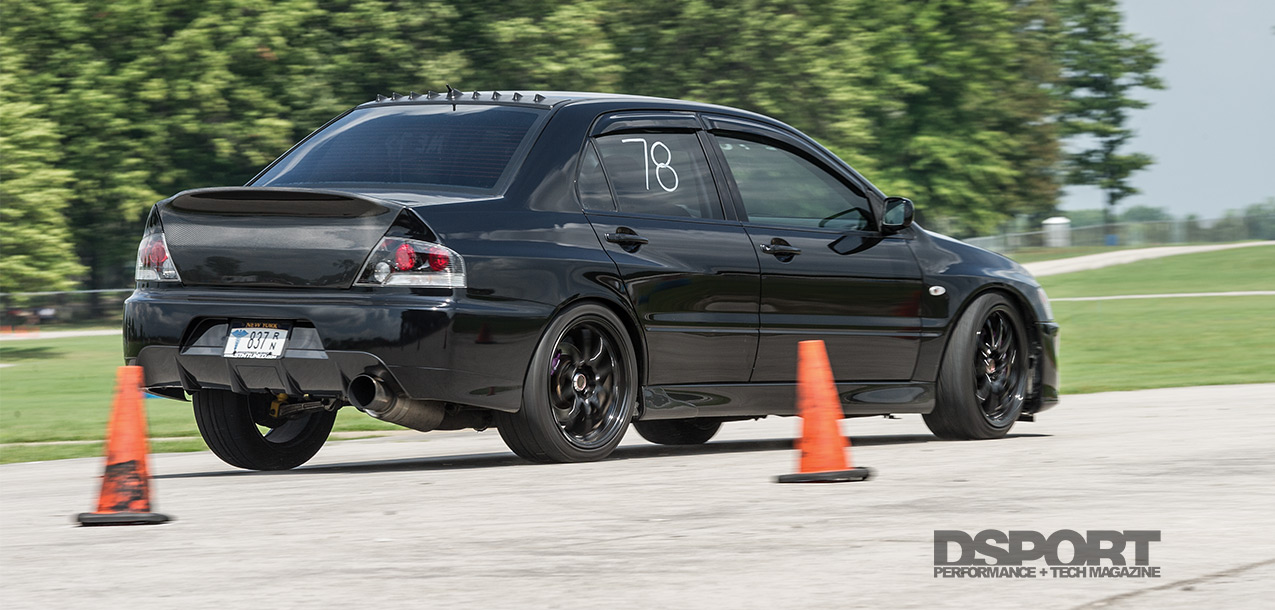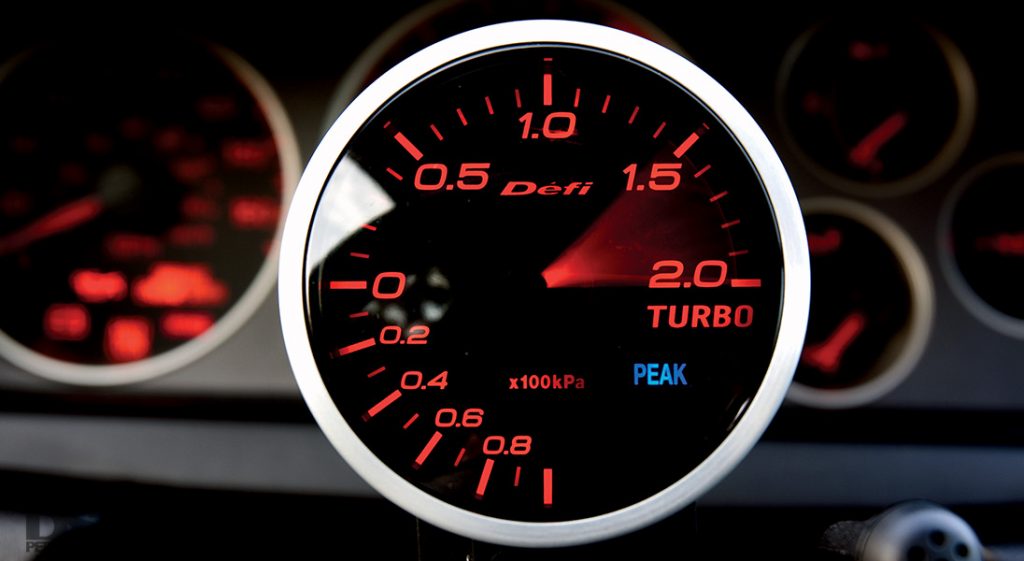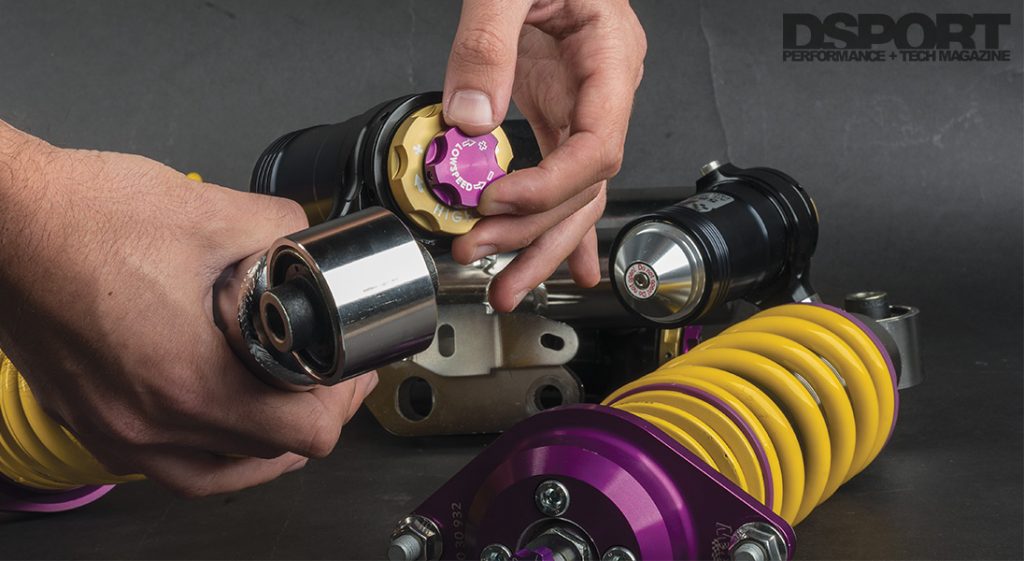In a world where fake news and alternative realities are daily headlines, it can be a struggle to get past all the misleading advice, exaggerated claims, and flat-out hoaxes. While it is important to remain vigilant in the campaign against misinformation, the old saying “If it sounds too good to be true, it probably is.” is not always correct. The pessimistic belief that all claims are false can discourage an enthusiast from realizing his or her full potential. As always, our mission is to educate, entertain and inform our readers. So, let’s take a look at ten common automotive modification myths to help you separate fact from fiction and strengthen your resistance to performance propaganda.
Text by Michael Ferrara and Cameron Parsons // Photos by DSPORT staff
DSPORT Issue #188
Myth #1. Higher Compression Ratio = More Power
There is a long-standing belief that increasing the compression ratio always results in more performance as long as knock can be avoided. There is even a rule of thumb that says for every point of increase in static compression there will be a corresponding 4-percent increase in torque and power output. Before you go and build that 14:1 compression ratio engine that you’ll boost at 35psi on E85, it’s time to understand the truth.
The belief and rule of thumb that have existed for decades came long before the advent of forced-induction and four-valve engines. While there is no doubt that the thermal efficiency (how much energy gets extracted from each drop of fuel) improves by increasing the static compression ratio of the engine, there is also a good chance that the changes required to increase the compression ratio negatively impact the engine’s volumetric and combustion efficiency significantly.
In terms of volumetric efficiency, higher compression engines provide less volume to be filled when the piston is at bottom dead center. Since forced induction engines can easily pack and fill all of the nooks and crannies of the cylinder, higher compression ratio engines will have lower volumetric efficiencies than lower compression ratio ones. When the increase in compression ratio results from adding or increasing the size of a dome on the piston, it’s likely that the combustion efficiency has decreased (percentage of the air-fuel charge that undergoes complete combustion).
Hence, while increasing compression ratio increases the thermal efficiency of the engine, it will reduce the engine’s volumetric efficiency and may reduce its combustion efficiency. So how much compression ratio is ideal? Only a dedicated engine development program will tell you the exact number for a particular engine. The type of piston (dished, flat, domed), engine stroke and combustion chamber (pentroof, hemi, with quench pads or without) all impact the ideal selection.
Myth #2. More Octane = More Power
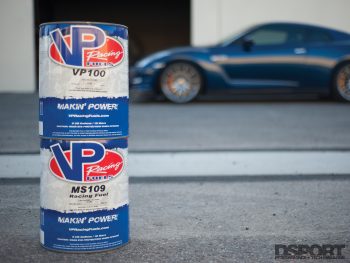 A measure of a fuel’s octane rating is simply a rating of the fuel’s resistance to knock. Pump fuels are all E10 or 10-percent ethanol blends in the States. Regardless of octane, an 85-octane pump gas has the same energy content per liter as the 93-octane pump gas. On applications that are more susceptible to knock (forced induction, direct injection), a higher octane fuel will allow the ideal amount of ignition timing to run for maximum performance. When lower octane fuels are used on an engine tuned for a higher octane fuel, knock is encountered and the ECU retards the spark timing to avoid knock (reducing power output). However, if there is no knock present and higher octane fuel is added, there will be no power gain. This is often the case when an engine tuned to run on 87 octane runs on 91 or 93-octane gasoline. In some cases, the higher octane fuel may have a slower burn rate that will actually reduce power.
A measure of a fuel’s octane rating is simply a rating of the fuel’s resistance to knock. Pump fuels are all E10 or 10-percent ethanol blends in the States. Regardless of octane, an 85-octane pump gas has the same energy content per liter as the 93-octane pump gas. On applications that are more susceptible to knock (forced induction, direct injection), a higher octane fuel will allow the ideal amount of ignition timing to run for maximum performance. When lower octane fuels are used on an engine tuned for a higher octane fuel, knock is encountered and the ECU retards the spark timing to avoid knock (reducing power output). However, if there is no knock present and higher octane fuel is added, there will be no power gain. This is often the case when an engine tuned to run on 87 octane runs on 91 or 93-octane gasoline. In some cases, the higher octane fuel may have a slower burn rate that will actually reduce power.
Myth #3. More Boost = More Power
Anyone with a turbocharged vehicle has probably experienced the positive benefits of gradual boost pressure increases over the factory set levels. This experience leads many to believe that more boost always equals more power. The reality is that this is only true up to a point. At a certain boost level, it is possible that the outlet temperatures from the turbocharger are so high that detonation will occur if the ignition timing isn’t retarded. At that point, the power lost from retarding the timing to avoid knock isn’t overcome by the increase in mass flow at the higher boost pressure.
Myth #4. Rich + Retarded = Safe Tune
There are a number of ECU “tuners” and calibrators out there that really shouldn’t be tuning vehicles. These tuners lack the knowledge and understanding of fundamental combustion engine dynamics. In many cases, these tuners are just good at navigating through the tuning software but don’t have a clue at how to tune. As a result, these tuners often provide a customer with a “conservative and safe tune.” They believe that running excessively rich air-fuel ratios (which makes it impossible to experience a lean condition) and an ignition map that doesn’t have enough spark advance (so that no knock could ever occur) is the way to go. At first glance, it makes sense. However, what these “tuners that shouldn’t be tuning” don’t realize is that the combination of rich fuel mixture and retarded ignition timing can be deadly to the exhaust valves, exhaust manifold, and turbocharger. When rich fuel mixtures are teamed with a spark that’s too late (retarded ignition timing), the combustion process starts late and creates a makeshift afterburner through the exhaust port and into the exhaust manifold. Having an EGT in place can help identify this problem. Bottom line is if a tuner says that they are setting you up with a safe tune that will be really rich and super conservative on the ignition timing side, tell them you’d rather find a tuner that can just tune it right.
Myth #5. Lighter the Flywheel, the Better
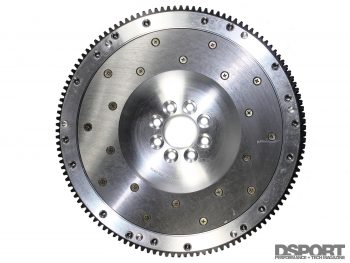 Factory flywheels are designed to allow smooth engagement with low RPM takeoffs from a dead stop. On the heavy side, these flywheels store a great amount of kinetic energy even at low engine speeds. Being heavy, factory flywheels can impact the free-revving ability of the engine. Heavy flywheels can slow shifting (or at least cause more wear on the synchros), as they do not let the engine come down in RPM quick enough for that speedy gear change. A performance lightened flywheel addresses these issues. Being lighter, gear shifts can be made quicker. The tradeoff is that it may take a bit more RPM to takeoff from a dead stop as there’s less energy stored in a lightened flywheel. Go too light and you’ll have to take off at 6,000RPM or severely slip the clutch.
Factory flywheels are designed to allow smooth engagement with low RPM takeoffs from a dead stop. On the heavy side, these flywheels store a great amount of kinetic energy even at low engine speeds. Being heavy, factory flywheels can impact the free-revving ability of the engine. Heavy flywheels can slow shifting (or at least cause more wear on the synchros), as they do not let the engine come down in RPM quick enough for that speedy gear change. A performance lightened flywheel addresses these issues. Being lighter, gear shifts can be made quicker. The tradeoff is that it may take a bit more RPM to takeoff from a dead stop as there’s less energy stored in a lightened flywheel. Go too light and you’ll have to take off at 6,000RPM or severely slip the clutch.
Myth #6. Damper Settings: The More Adjustments the Better
When setting up your car for any performance goal, there are few correct ways to make adjustments and there are many more ways to screw things up. There are plenty of coilovers on the shelf that offer one, two, three, or four elements of adjustment with a wide range of valve settings. But did you know that there are eight-way adjustable dampers in existence? Can you even name what each of those adjustments affects? Many of today’s one-way and two-way adjustable dampers are fine-tuned from the manufacturer, you’d be hard-pressed to take the responsibility of tuning your car to even greater detail and find a positive result. There are also dampers that offer 8 clicks of valve adjustment while others offer more than 30 valve settings. In this case, you might not even be able to tell the difference between 10 clicks and 15 clicks. When it comes to dampers, put trust in the manufacturer and only purchase the parts that you’re able to understand. If you attempt any setup changes that you really shouldn’t touch, you’re more likely to damage something than see any improvement.
Myth #7. No Such Thing as Too Much Wing
 Time attack and autocross racing are notorious for setting awful downforce trends. Even worse is when someone finds inspiration from Formula One and Le Mans race cars, and convince themselves that their streetcar would benefit from the same level of aerodynamics. A wing produces more downforce at higher speeds, but in turn, creates more drag. Don’t get caught up in the belief that giant canards and rear wings help your car go faster, because in terms of speed they actually do the opposite. A proper aero setup adds downforce only where needed, such as adding a front spoiler if the car is pushing or extra rear wing if the car tends to oversteer. You must weigh your options with wing sizes and angles, determining if you want higher top speeds or more confidence in corners, but you can’t have both.
Time attack and autocross racing are notorious for setting awful downforce trends. Even worse is when someone finds inspiration from Formula One and Le Mans race cars, and convince themselves that their streetcar would benefit from the same level of aerodynamics. A wing produces more downforce at higher speeds, but in turn, creates more drag. Don’t get caught up in the belief that giant canards and rear wings help your car go faster, because in terms of speed they actually do the opposite. A proper aero setup adds downforce only where needed, such as adding a front spoiler if the car is pushing or extra rear wing if the car tends to oversteer. You must weigh your options with wing sizes and angles, determining if you want higher top speeds or more confidence in corners, but you can’t have both.
Myth #8. More Pistons, More Braking
 Giant brake calipers and rotors filling in the wheel may add to your car’s appearance, but jumping to the biggest and flashiest brake kit out there is rarely your best option in terms of performance. First, are your brakes capable of locking up tires or activating the ABS? If so, it’s your tires that are holding you back and not your brakes. After installing high-temperature pads and fluid, do you experience brake fade when on track? If not, then there’s a good chance that you don’t really need to upgrade anything else. Big brake kits typically offer larger calipers with 4, 6, or even 8 pistons, as well as upsized rotors, affecting rotating mass and unsprung weight. When you install larger caliper braking systems with more pistons, you also increase the piston area. If you go too far with the piston area, there’s a good chance that your factory master cylinder won’t be able to supply enough pressure through the lines and to the calipers. This means less stopping torque on the brake rotors and a longer-traveling, softer brake pedal.
Giant brake calipers and rotors filling in the wheel may add to your car’s appearance, but jumping to the biggest and flashiest brake kit out there is rarely your best option in terms of performance. First, are your brakes capable of locking up tires or activating the ABS? If so, it’s your tires that are holding you back and not your brakes. After installing high-temperature pads and fluid, do you experience brake fade when on track? If not, then there’s a good chance that you don’t really need to upgrade anything else. Big brake kits typically offer larger calipers with 4, 6, or even 8 pistons, as well as upsized rotors, affecting rotating mass and unsprung weight. When you install larger caliper braking systems with more pistons, you also increase the piston area. If you go too far with the piston area, there’s a good chance that your factory master cylinder won’t be able to supply enough pressure through the lines and to the calipers. This means less stopping torque on the brake rotors and a longer-traveling, softer brake pedal.
Myth #9. How Low Can You Go?
Short-sighted tuners obsess over the center of gravity. Their theory is that the lower you can drop a car, the better it will handle. This is true only when you ignore the car’s chassis and suspension configuration. There are many different types of suspension setups out there, from basic double wishbones to more complicated multi-link systems. Regardless of the layout, the links and control arms were designed to allow the wheels to change their alignment in different ways as they move up and down the range of the suspension. When a car gets slammed to the ground, the suspension geometries turn into a total mess, ruining the car’s handling performance and drivability.
Myth #10. Stiffen Up for Better Handling
Many automotive journalists complain about body roll like it’s always a bad thing. This has led many to believe that the stiffer you go on springs and the more rigid you go on sway bars, the better your car will handle. What many forget is that the suspension’s job is to maintain the tires’ contact with the road and to manage weight transfer for cornering. A stiff setup means that if you take a corner on a bumpy road, there’s a good chance that the tires will spend time airborne instead of doing their job of providing traction. A notable advantage to stiff suspension settings is that it typically quickens a car’s weight transfer, making it more responsive. It also affects spring rate in relation to wheel camber, aiming to shift weight onto the appropriate tire and put as much of that tire’s surface area against the road. The problem is that if you go too far with this, the car won’t have enough motion and roll to shift weight to the tires doing the most work. In this case, excessively stiff sway bar and suspension settings on the front end lead to understeer, while going too stiff on the rear causes oversteer.


